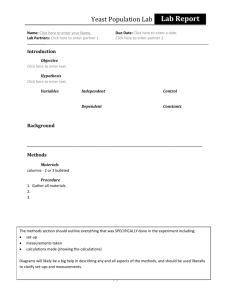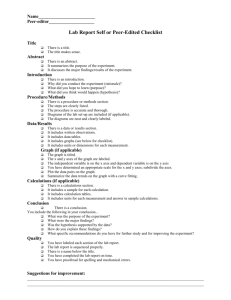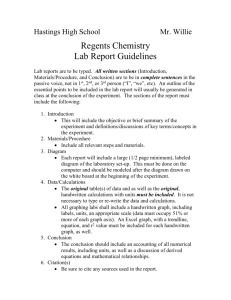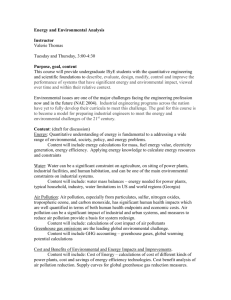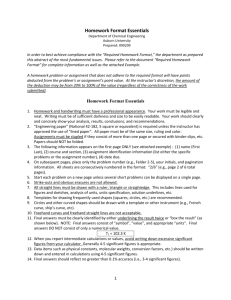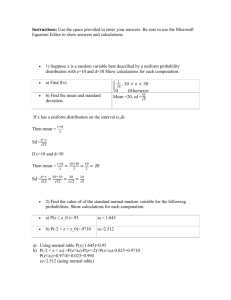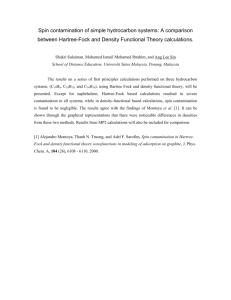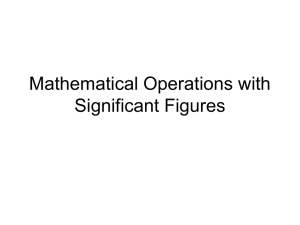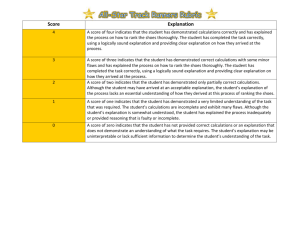Lab Report Guidelines - Physics, High School
advertisement
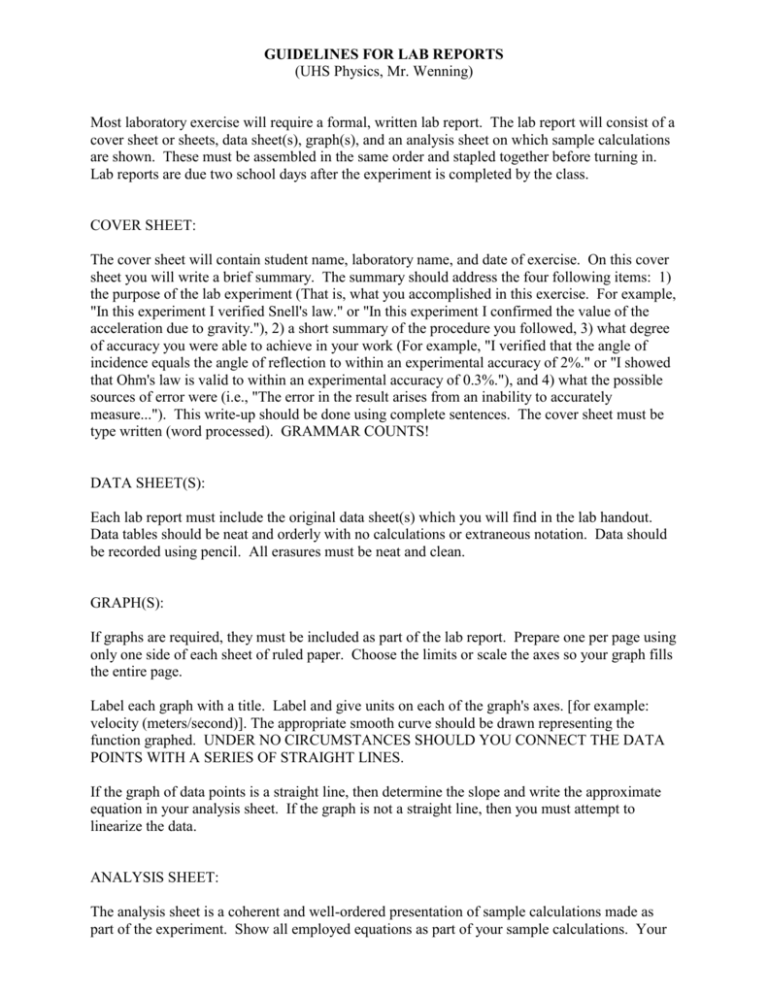
GUIDELINES FOR LAB REPORTS (UHS Physics, Mr. Wenning) Most laboratory exercise will require a formal, written lab report. The lab report will consist of a cover sheet or sheets, data sheet(s), graph(s), and an analysis sheet on which sample calculations are shown. These must be assembled in the same order and stapled together before turning in. Lab reports are due two school days after the experiment is completed by the class. COVER SHEET: The cover sheet will contain student name, laboratory name, and date of exercise. On this cover sheet you will write a brief summary. The summary should address the four following items: 1) the purpose of the lab experiment (That is, what you accomplished in this exercise. For example, "In this experiment I verified Snell's law." or "In this experiment I confirmed the value of the acceleration due to gravity."), 2) a short summary of the procedure you followed, 3) what degree of accuracy you were able to achieve in your work (For example, "I verified that the angle of incidence equals the angle of reflection to within an experimental accuracy of 2%." or "I showed that Ohm's law is valid to within an experimental accuracy of 0.3%."), and 4) what the possible sources of error were (i.e., "The error in the result arises from an inability to accurately measure..."). This write-up should be done using complete sentences. The cover sheet must be type written (word processed). GRAMMAR COUNTS! DATA SHEET(S): Each lab report must include the original data sheet(s) which you will find in the lab handout. Data tables should be neat and orderly with no calculations or extraneous notation. Data should be recorded using pencil. All erasures must be neat and clean. GRAPH(S): If graphs are required, they must be included as part of the lab report. Prepare one per page using only one side of each sheet of ruled paper. Choose the limits or scale the axes so your graph fills the entire page. Label each graph with a title. Label and give units on each of the graph's axes. [for example: velocity (meters/second)]. The appropriate smooth curve should be drawn representing the function graphed. UNDER NO CIRCUMSTANCES SHOULD YOU CONNECT THE DATA POINTS WITH A SERIES OF STRAIGHT LINES. If the graph of data points is a straight line, then determine the slope and write the approximate equation in your analysis sheet. If the graph is not a straight line, then you must attempt to linearize the data. ANALYSIS SHEET: The analysis sheet is a coherent and well-ordered presentation of sample calculations made as part of the experiment. Show all employed equations as part of your sample calculations. Your calculations must carry units throughout. Calculations must reflect an understanding of significant digits. Do a sample of each calculation performed in the experiment. Trivial calculations such as addition, subtraction, and averaging need not be included. If you are calculating the slope of a graph line, be sure to include these calculations in your analysis. Note that the slope usually has units and a physical meaning. These must be included in your analysis. Do not perform calculations on the data sheet or graphs. Prepare your analysis sheet using the same logical order in which the experiment was performed. If the analysis steps are written in order and numbered, this means you should number items in your analysis sheet in the same fashion. Perform all analyses that are indicated in your lab manual or by your lab instructor. ACCURACY OF RESULTS: Each student's work should reflect the fact that care was taken in all measurement processes. Though the accuracy of your results will vary from experiment to experiment, overall error should be relatively small throughout. If a result departs markedly from the anticipated result (as indicated by a large margin of error), a follow-up set of measurements should be made to isolate and eliminate the source(s) of error. The integrity of the data must be preserved at all times. In no case should the student skew the data so that proper experimental results or a smaller experimental error are achieved. Memorize the following definitions of % difference and % error: Percent Error An indication of how far off your experimental value is from the officially accepted value; the difference divided by the accepted value expressed in a percentage form. % error = | experimental value - accepted value | x 100 accepted value Percent Difference An indication of how far off one experimental value is from another experimental value; the absolute difference divided by the average expressed in a percentage form. % difference = | A - B | x 200 (A + B) where A and B are experimental values.

